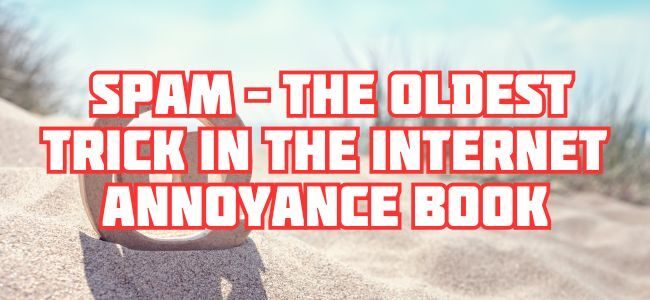SPAM — THE OLDEST TRICK IN THE INTERNET ANNOYANCE BOOK
Ah, UCE – Unsolicited Commercial Email. Or, in human terms: spam. No, not the canned meat. We mean the thing that makes your inbox look like a flea market full of shady «offers» you never asked for.
🕰 A Short History of the Longest Nuisance
The first known spam email dates back to 1978, when a marketing rep at DEC sent a mass promotion to 393 ARPANET users. Back then, it was «innovative.» Now, it’s a digital cockroach – surviving every new security measure thrown at it.
Fast forward to today: spam makes up more than 45% of all global email traffic. That’s like half your postal mail being pizza coupons you never wanted.
🚔 Is UCE a Crime?
For most countries – yes. Anti-spam laws like CAN-SPAM (US), GDPR + ePrivacy (EU), CASL (Canada), and countless others make it illegal to send bulk commercial messages without consent.
In many jurisdictions, spam can cost you real money in fines – sometimes thousands per single message. And if you think «but my offer is so good, they’ll thank me later!» – the law still says nope.
📉 Does Spam Kill Email as a Business Tool?
Absolutely. The more spam flows, the more people mistrust email as a serious communication channel. Businesses lose time, customers miss important messages, and legitimate senders get stuck in junk folders. It’s the reason some companies now prefer chat apps or ticket systems over plain email.
🛡 How Email Admins & Users Fight Back
Email has a few lines of defense, like:
- SPF (Sender Policy Framework) – Confirms a sender’s IP is allowed to send mail for a domain.
- DKIM (DomainKeys Identified Mail) – Adds a digital signature to verify message authenticity.
- DMARC – Tells receiving servers what to do if SPF/DKIM fail.
- Filters & Blacklists – Block known spam sources.
- User training – Yes, «don’t click that weird link» still works.
But it’s a constant arms race – spammers evolve as fast as defenders.
🤖 Enter AI: Both Sides of the Fence
AI helps email providers filter out spam better than ever – learning from patterns, sender reputation, and even writing style.
But here’s the plot twist – spammers use AI too. From crafting more convincing phishing emails to automatically bypassing filters, AI has become both the hero and the villain in this story.
🚫 ITLDC’s Stance: Zero Tolerance
At ITLDC, our policy is simple: spam is not welcome here – at all.
If we detect spam activity from a service, we immediately restrict it to prevent harm to recipients and protect our network reputation.
Our Acceptable Use Policy (https://itldc.com/en/support/acceptable-use-policy/) is clear: sending or facilitating spam is forbidden. Violations can result in service termination and contractual penalties.
Because we believe email should still be a reliable business communication tool – not a dumpster fire of fake invoices, miracle pills, and princes needing your bank account.

